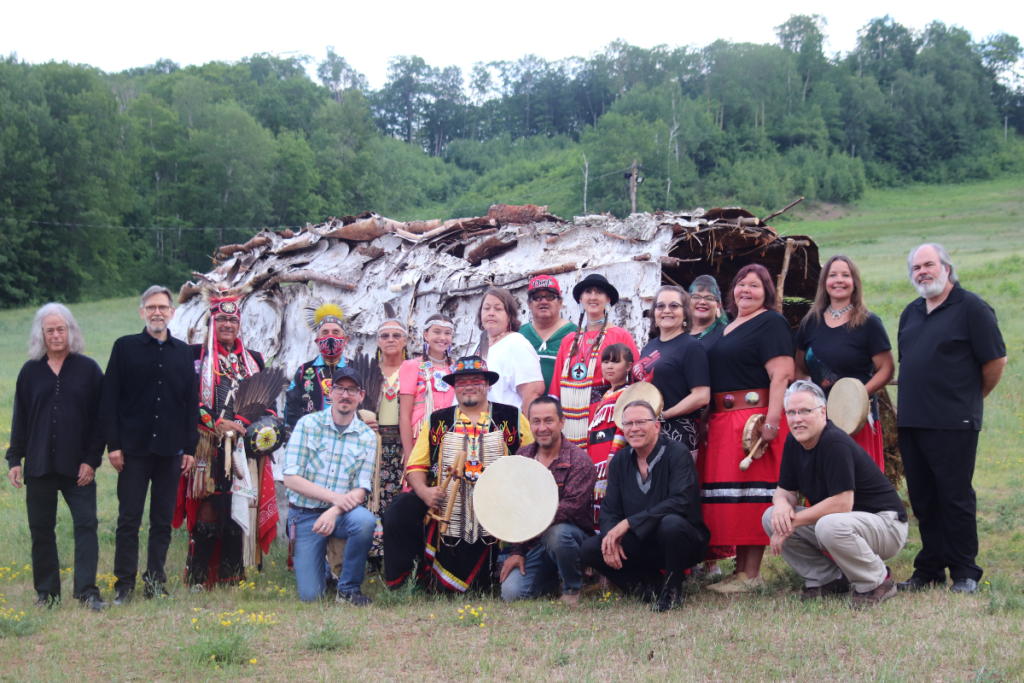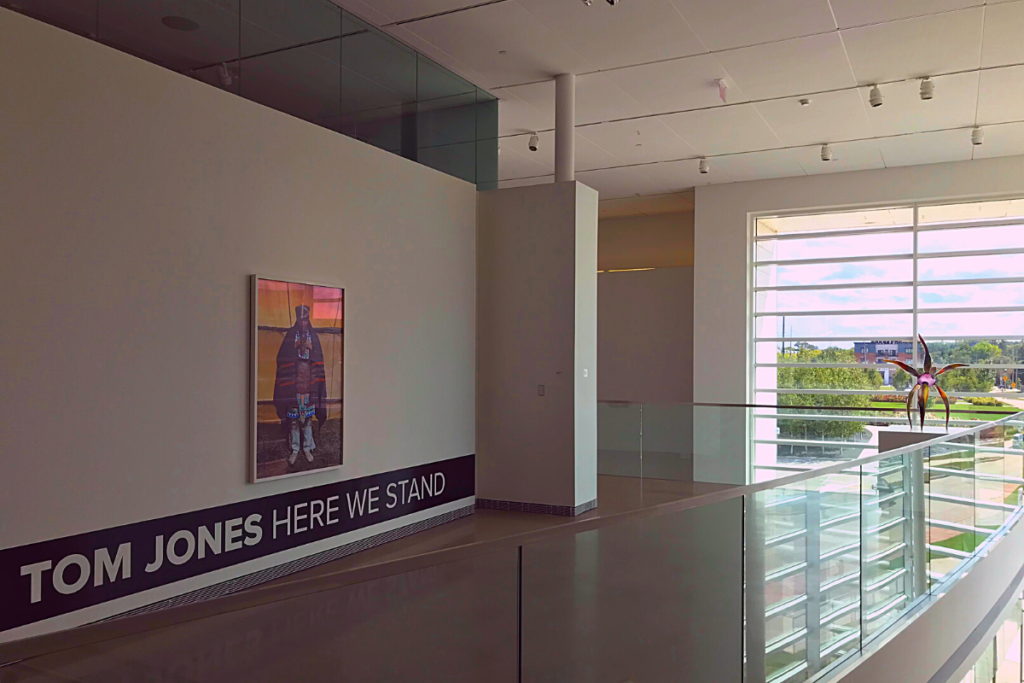From the shores of Lake Superior to the rolling hills of the Driftless, October is recognized as Arts & Humanities month!
Terry Matier is the Executive Director of Lake Superior Big Top Chautauqua, located in Bayfield County. For nearly four decades, this small community organization has been "providing culture under the canvas." The unique outdoor venue hosts entertainers and creates original productions that celebrate history and the environment.
Wisconsin Humanities grants have supported many of their programs over the years, including an expansion of their virtual programs to reach more school children, especially during the pandemic, and a collaboration with local Native American artists and culture keepers to tell the real stories of the First Peoples' legends and their interactions with White settlers in the region. This collaboration resulted in an original musical production called Anishinaabe Dibaajimowin, An Ojibwe Story.
Wisconsin's 2022 proclamation from Governor Evers states, among other things, that the arts and humanities build connections and understanding between diverse groups of people within our communities and enrich the lives of all Wisconsinites. So we asked Matier to tell us about her experiences and thoughts on the importance of the arts and humanities.

WH: What impact do you think arts and humanities programs, like Anishinaabe Dibaajimowin, An Ojibwe Story, can have on your community?
Matier: Perhaps it will be the school children that are most affected by seeing the beautiful dancers, the amazing stories, the musicianship. For our Native children, their stories were being told literally in the spotlight, their traditional dances were being celebrated with all of the exquisite hand-beaded regalia. For the non-Native children, perhaps an element of this show will be called to mind the next time they hear a negative stereotype, and they will not believe it nor pass it on. Or perhaps they will have compassion and understanding for a person who is not like them because maybe they had different hardships.
As for an afterlife, I’d like to believe that the impact will be felt on audience members for a long time. This show will continue to be performed at Big Top and we’re working on taking the show to schools and performing arts centers in other Anishinaabe communities in Northern Minnesota and Wisconsin. In these shows we will invite local dancers to participate and will incorporate some of their elders’ photos and videos to help connect their communities. We have been able to livestream the show in various ways including through Facebook for our family show and on our Tiny Tent Show program.
I would like to just give you a few examples of what I’ve seen being involved in this show. First of all, I’ve seen our performers blossom. One member of the Red Cliff tribe who worked with us as an interface between the cultures said to me at our most recent show, “I’ve known most of these people all of my life, and I’ve never seen them like this – so full of confidence.” She also wrote in the cast group chat “I cannot explain the pride I feel for this show. Chi miigwech for paving new paths in performing arts for indigenous representation and storytelling!” One of our performers who is a teacher talked of how healing it was to hear the Ojibwe language spoken and sung.
Since launching this show, I see some of these performers (some who had never performed on a stage before) going out and doing other performances, workshops, talks, videos. They have gained a new level of confidence and pride plus experience, so our impact is multiplied, mobilized, and heading out in all directions. I’ve also seen some anger and judgment toward the non-Native participants soften as we worked together. There were tears from our non-Native director after opening night. She had felt at several points that she was not the right person to see this through, she felt the anger toward the colonizers as being directed toward her. But in fact, she was the person to pull this all together, and in the end the bonds made between her and the cast are healing and deep. One of our volunteers who is a non-Native person said to me after the show that she had a much better understanding of our neighbors on the reservation. She said “I just didn’t know.”
Perhaps the most poignant story I heard was from one of our lady drummers. Her family was watching the performance via livestream. They told her, as she was texting with them from backstage during the show, that they were all crying and that it was the first time they ever felt proud to be Native. When I heard that I knew that our objectives for this project were met and exceeded.
WH: What role do you think the arts and humanities play in 2022, in facing current issues and concerns?
Matier: The biggest role for the arts and humanities in current times is to bring diverse people together in a way that shows our common humanity and helps us understand and even admire people who are both similar to and different from ourselves. It is much more difficult to demonize a person or group of people once you’ve been exposed to them, interacted with them, or witnessed a work of art by them. In this age of division, fear and anger, the arts & humanities are one of the best ways of opening people’s hearts and exemplifying our shared beauty, our shared experiences, our shared emotions, our shared sorrows, our shared journey.
Our program Anishinaabe Dibaajimowin, An Ojibwe Story had so many positive impacts on our community, a community that has had issues with racism and stereotypes between the Native and non-Native populations. Incidents like the recent police shooting of a Native American teenager, the building of an oil pipeline on reservation lands, the meth and opioid epidemics, and even back to hunting and fishing rights cases all have contributed to community divisions and misunderstandings between people. Fear, resentment, judgement -- people have a lot to say about each other without really taking the time to understand and learn. Anishinaabe Dibaajimowin has inspired great pride for the folks who created it and performed in it, but also pride for the Native American folks in the audience, seeing their stories being celebrated on the big stage.
WH: For organizations that may not know of Wisconsin Humanities, how would you describe 'the humanities' to them?
Matier: For those unaware of Wisconsin Humanities, I would simply say that the humanities are anything that connect people to those things that make us human. There are mathematics and sciences for the brain, and there are the humanities for the heart and spirit. Thanks to Wisconsin Humanities for helping to fund this incredible project, Anishinaabe Dibaajimowin, at Big Top Chautauqua. Many lives have been enriched and many hearts have been touched. Chi Miigwech!
We are celebrating our 50-year history as part of the vibrant cultural life of this state.
Whereas; the arts and humanities build connections and understanding between diverse groups of people within our communities, enriching the lives of all Wisconsinites...
NOW, THEREFORE, October 2022 is Arts and Humanities month!
→ Read the Governor's Proclamation!





